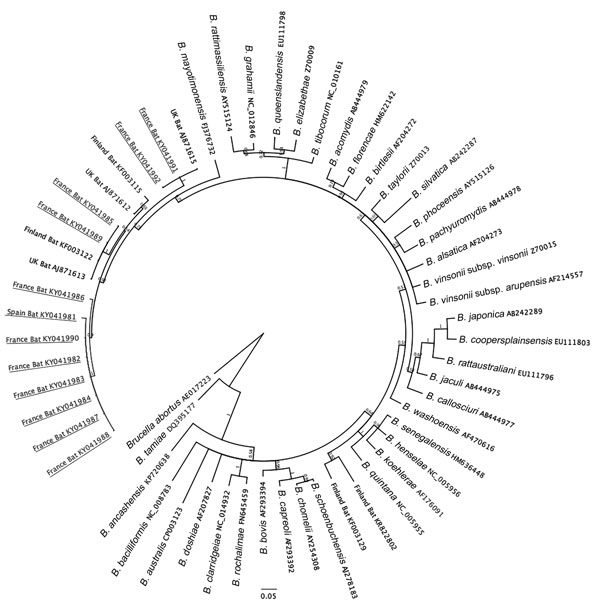Volume 23, Number 3—March 2017
Research Letter
Potentially Zoonotic Bartonella in Bats from France and Spain
Figure

Figure. Phylogenetic analysis of citrate synthase (gltA) gene sequences of 12 Bartonella spp. variants detected in bats from France and Spain (underlined) compared with sequences from GenBank. All 12 of these variants clustered with zoonotic B. mayotimonensis.
Page created: February 17, 2017
Page updated: February 17, 2017
Page reviewed: February 17, 2017
The conclusions, findings, and opinions expressed by authors contributing to this journal do not necessarily reflect the official position of the U.S. Department of Health and Human Services, the Public Health Service, the Centers for Disease Control and Prevention, or the authors' affiliated institutions. Use of trade names is for identification only and does not imply endorsement by any of the groups named above.